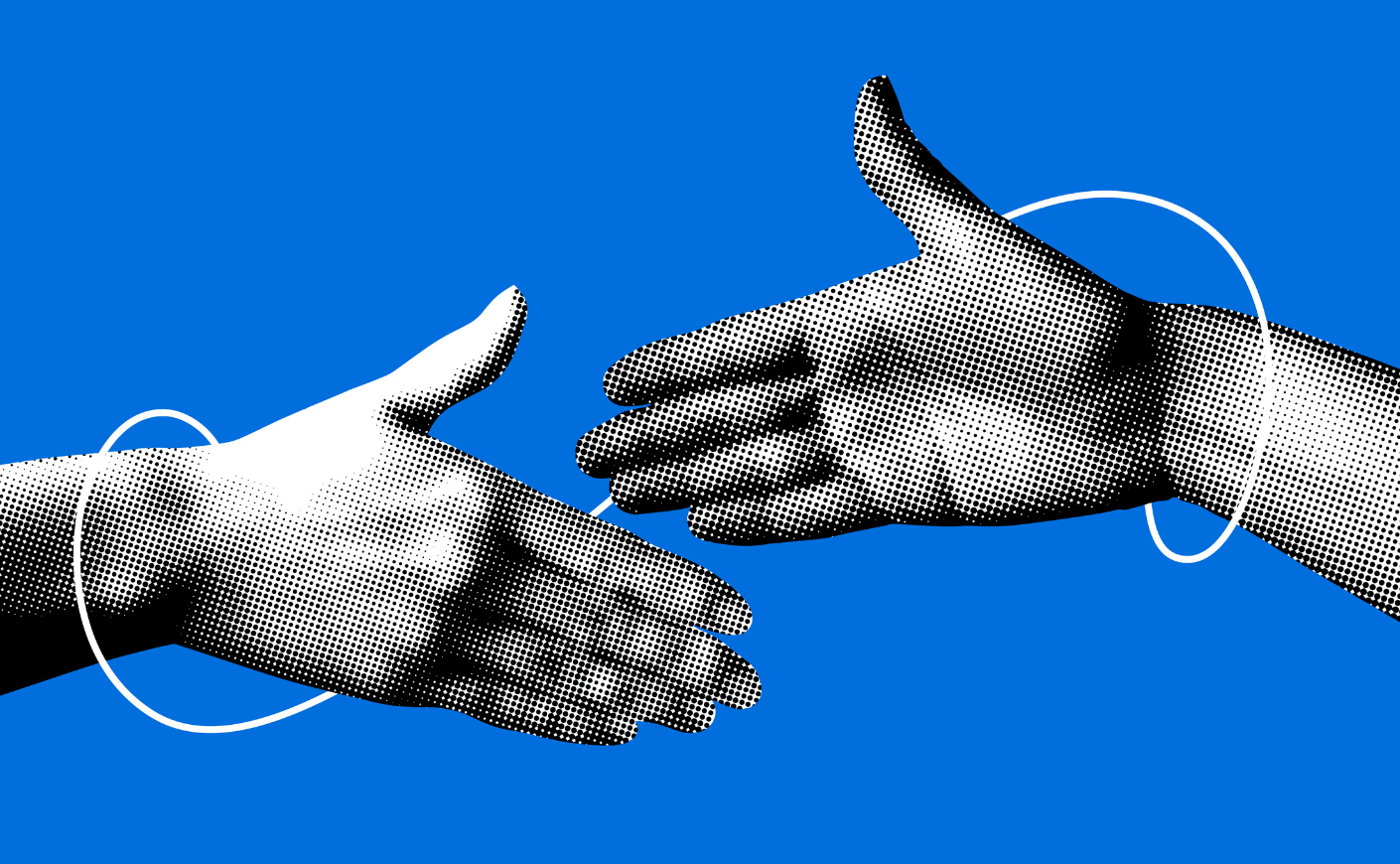Making new friends as an adult can feel a little like dating — awkward small talk, ghosted group texts, and the occasional spark of real connection. And it can be especially tough if you’ve just moved to a new city and need to completely start over. In this excerpt from How I Found Myself in the Midwest: A Memoir of Reinvention, author Steve Grove dives into the weird, wonderful world of grown-up friendship. After moving back to his home state of Minnesota, he found himself rebuilding his social life from scratch — with all the cringey moments and unexpected wins that come with it. His story is a warm, witty reminder that it’s never too late to find your people.
“Do you think it’s too early to text him back?” I asked my wife Mary sheepishly.
We’d just returned from a holiday party hosted by one of the families in the kids’ elementary school, and I had what I thought was a good conversation in the kitchen with the dad, Kevin. He was a transplant from Oregon by way of New York, and was working as a successful musician. Concert posters from his past shows hung on the walls of their home, and a piano was parked in the middle of the living room. He seemed very cool. I wondered if he might be a potential friend.
Gracefully, Mary treated my question with sincerity. “Let’s see, it’s been two days . . . I think you’re okay to text him.” I carefully texted a thank you, wishing him a happy holiday and vaguely suggesting we get together in the new year. Then I waited. Two hours later, he replied back warmly, remembering our conversation and agreeing to my faint invitation to meet up sometime. He even included three emojis. My heart jumped. “He wrote back!” I sang to Mary. She laughed and gave me a hug. “Congratulations, honey!”
I blushed and put my phone down, plotting my next move. Finding new friends in your forties, especially in a new community, can feel a lot like dating. You don’t have a lot of time, there are awkward barriers to cross, and truly getting to know someone takes vulnerability and commitment precisely when those things are being demanded of you by your family and job, too.
Experts estimate it takes more than two hundred hours for a stranger to become a close friend. That’s a lot of time and effort that’s hard to come by, given the modern demands of adulthood.
Staying close with friends from other chapters of life was enriching, but it wasn’t the same as having friends in my neighborhood.
Plus I had recently moved back to my home state of Minnesota in my 40s, where most people stay and keep their friends from childhood, and don’t always have time for new friends. Moving near family had been powerful, but for Minnesota to feel like my chosen home, I knew I needed a chosen family, too. I needed friends.
When we’d first moved to the state, Mary and I had gotten off to a good start, hosting barbecues and inviting people over often. A year in, we felt like we were making some progress. But then the pandemic hit, grounding everything to a halt. Instead, I retreated to groups of friends from previous stages of my life, keeping in touch over group texts.
Staying close with friends from other chapters of life was enriching, but it wasn’t the same as having friends in my neighborhood. Why did that seem so much harder? As I pulled through a workout on the rowing machine one morning, I listened to a podcast that referenced the acclaimed book Bowling Alone, which I’d read 20 years earlier. In it, the political scientist Robert Putnam coined the phrase “social capital” and charted its decline in the twentieth century. He used the metaphor that participation in bowling leagues had declined by 40 percent since 1980, while overall bowling had risen by 10 percent, to show an American community that was spending less time joining activities and making new friends, and more time doing stuff on their own.
Putnam cited many factors that led to a decline in social capital, from urban sprawl, television, and two-career families, to time and money pressures. A few decades later, we seemed to have only gotten worse.
Putnam debunks the idea that we’re more isolated because we’re just too busy. Modern American adults spend on average ten hours a day with media, five of it with television. We’ve just replaced time we had spent with others with being alone.
While I may have been rowing alone, I wasn’t the only one. Many Americans report that making new friends has grown more difficult, especially since Covid. A recent survey reported only half of Americans are satisfied with the number of friends they have. Men seem to be in worse shape than women, with 15 percent saying they had no close friends at all, five times higher than in 1990.
One Saturday morning I got in my car and typed in the address of a coffee shop across town. I tried to calm my nerves. A few weeks earlier, I’d signed up online for a Meetup group called Break the Bubble. The description online seemed targeted exactly at transplants like me: “Break the Bubble was created to solve a big problem: How do you make new friends in the Twin Cities? Making friends here is hard. We’re changing that.”
When I arrived at the meetup, just ten minutes after the posted starting time, fifty people were milling about in a large open space just off to the side of a coffee bar. Jon, a transplant to Minnesota himself, started organizing the group six years ago. Having grown up in South Bend, Indiana, as a self-described introvert, he explained, “Some people treat it as a place to meet lifelong friends, others treat it like a college party for adults.” I stuck a name tag on my shirt and walked over to a group of three men about my age, gathered next to a pillar with cups of coffee in hand. I introduced myself and asked what brought them to the meetup.
Bennett, a mustached software engineer who’d recently moved out of his parents’ house and into an apartment, was careful with his words: “I’m just trying to come here and talk to some people.” Later, I saw him sit down in a leather chair and strike up a conversation with someone else. Watching Bennett push himself to meet new people was inspiring; I hadn’t known quite what to expect, but being around others who were looking for community just like me made the world feel less lonely.
As I drove home, I left encouraged. While I didn’t leave with any new best friends, maybe more important wasn’t what I’d gained but what I’d lost: the embarrassment I had about struggling to meet new people. Everyone at that meetup was searching, just like me.
The places we call home are varied: Our physical neighborhoods, our virtual social networks, our schools, our community networks, and more are all places we find connection. Yet though we have more ways to build community than ever before, it often feels like we’re more isolated, too. I was finding that it takes deliberate action and a dash of courage to break through the bubble and meet other people. But once I did, I found others just as eager as me to make friends. As I stopped telling myself I was too busy and started reaching out to those around me, our community was starting to feel more like home.
One night, I took a leap and organized a pickleball night at a local brewery with some new friends. The night we all planned to meet, a big snowstorm hit. Giant, wet snowflakes fell from the sky and the roads were covered in snow. But everyone showed up. They all wanted the same thing I did — a chance to connect with a chosen community, and to share our lives with each other.
Steve Grove is the CEO and publisher of the Minnesota Star Tribune. Previously he worked as Minnesota’s commissioner of economic development, and as an executive at Google and YouTube.
Excerpted from How I Found Myself in the Midwest: A Memoir of Reinvention by Steve Grove. Copyright © 2025 by Steve Grove. Reprinted by permission of Simon & Schuster, Inc.













